Derby's Heritage Part 36 - Pride Park
w/e 30 December 2012
All this week's pictures were taken
with a Kodak DX6490
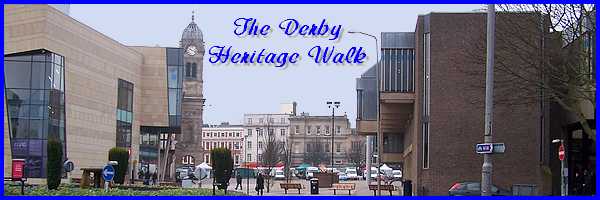
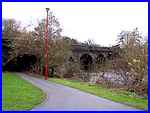 It
was January in 2010 that we began this Heritage Walk around Derby
and we have been featuring a new part on the last weekend of
every month since then. Now almost three years later and with
35 instalments behind us we have reached the final part which
will take us a little further away from the city centre and into
Pride Park. So on a grey December day with rain not far away,
we resume our walk having passed under the Five Arches Bridge
(left) which was built in 1840/41 to carry the North Midland
railway line over the River Derwent. Joint engineers of the line
were Robert Stephenson and his father George. It
was January in 2010 that we began this Heritage Walk around Derby
and we have been featuring a new part on the last weekend of
every month since then. Now almost three years later and with
35 instalments behind us we have reached the final part which
will take us a little further away from the city centre and into
Pride Park. So on a grey December day with rain not far away,
we resume our walk having passed under the Five Arches Bridge
(left) which was built in 1840/41 to carry the North Midland
railway line over the River Derwent. Joint engineers of the line
were Robert Stephenson and his father George.
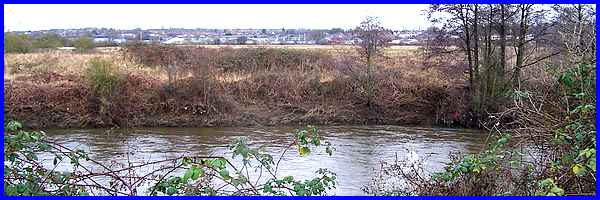
The flat land on the other side of the river prior to 1839 was
farmland and was known as The Meadows but it was soon acquired
by the railway industry and became Chaddesden Sidings, Chaddesden
being the name of the area to the north.
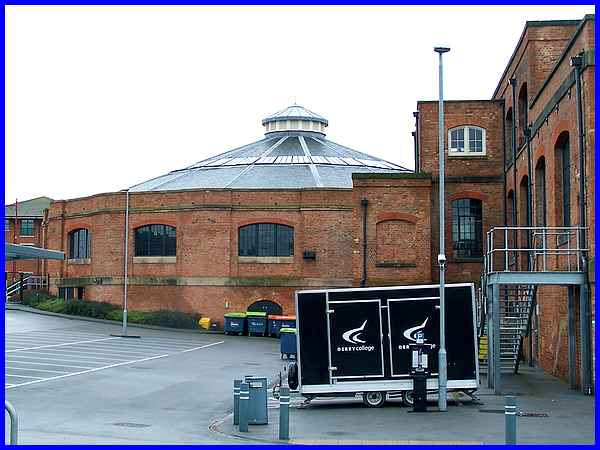
Shortly after Five Arches Bridge, there is a choice of paths.
One continues along the river bank but we temporarily left that
one to take another under the main road from the city centre
into Pride Park in order to pass the Roundhouse, a former railway
workshop. The Grade II* listed building has undergone a £48
million regeneration project and opened as part of the Derby
College campus in September 2009. The centrepiece of the campus
is the sixteen sided Victorian building with a forty metre central
space.
|
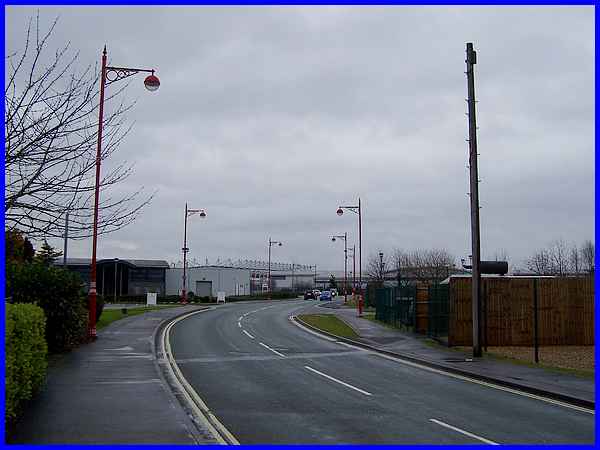
Pride Park itself is not a park in the sense of grass and trees
but a business park that has been created since 1993 on the site
of much of Derby's railway manufacturing industry. At one time
nearly 6000 people were employed here but by 1990, the area was
in a derelict state.
|
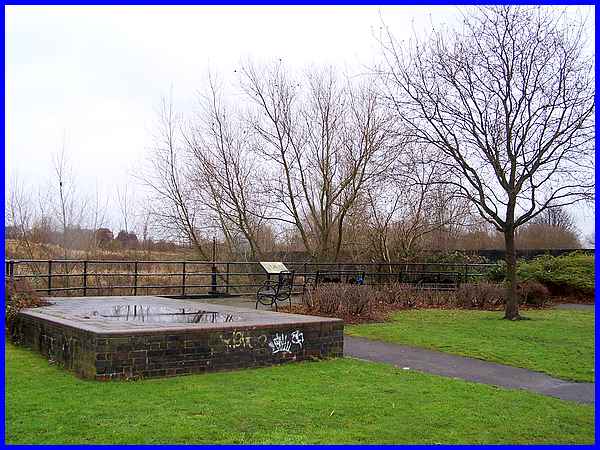
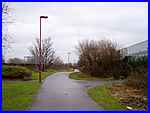 Several paths
lead from the business park back to the river bank where there
are a number of paved areas with seating that are probably popular
lunch break venues in better weather with workers from Pride
Park. The information panel here gives details of the wildlife
that can sometimes be seen by the river but unfortunately it
was difficult to read as it had been badly defaced. There is
also supposed to be an artwork (one of three) near here at the
side of the path (left)in the form of cast-iron columns made
from recycled rails retrieved from near the Roundhouse but it
was either very well hidden or has been removed. Several paths
lead from the business park back to the river bank where there
are a number of paved areas with seating that are probably popular
lunch break venues in better weather with workers from Pride
Park. The information panel here gives details of the wildlife
that can sometimes be seen by the river but unfortunately it
was difficult to read as it had been badly defaced. There is
also supposed to be an artwork (one of three) near here at the
side of the path (left)in the form of cast-iron columns made
from recycled rails retrieved from near the Roundhouse but it
was either very well hidden or has been removed.
|
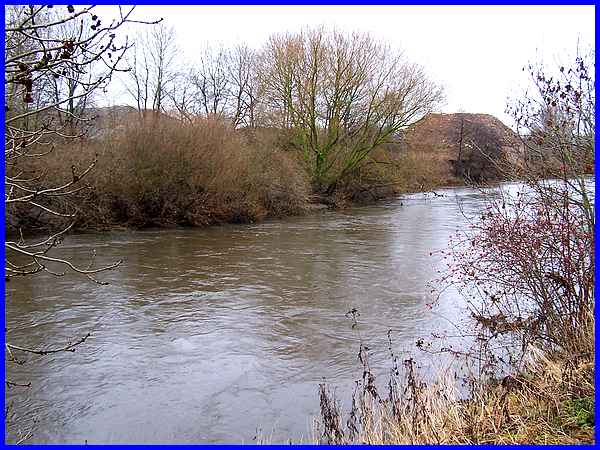
The gentle slope on which Chaddesden and neighbouring Spondon
sit has now disappeared behind heaps of spoil but it was once
one side of a broad valley created when the river was much wider
than it is now. This was getting on for 20,000 years ago at the
end of the Ice Age. Now if that's not "heritage" I
don't know what is!
|
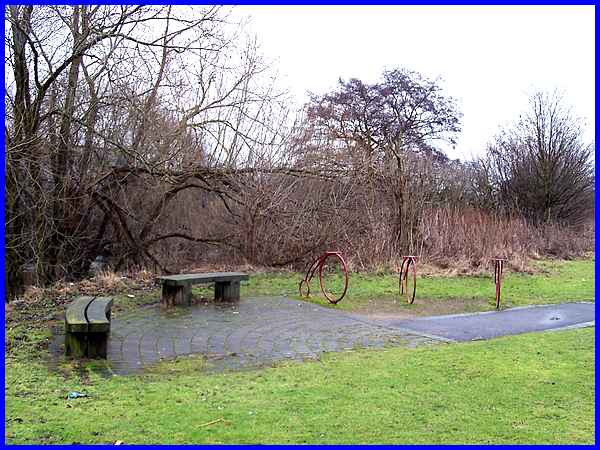
At a second paved area the piece of artwork is much easier to
spot but the seating this time faces away from the river unlike
the one we passed earlier. From here an old leaflet describing
"Derby's Riverside Quarter Trail" says that by looking
downstream the fourteenth century church of St Werburgh in Spondon
can be seen on the skyline. However despite knowing where to
look either the weather conditions or intervening trees and/or
buildings obscured the church.
|
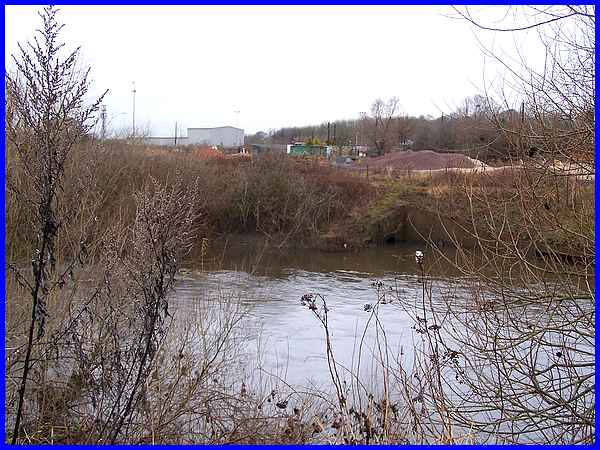
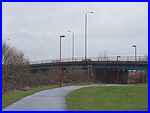 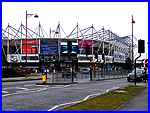 In the opposite direction, the cause
of the spoil heaps is obvious. As the river slowed after the
Ice Age, it dropped gravels and sands onto much older rocks known
as Mercia Mudstones. These gravels are being excavated for the
construction industry. The riverside path continues under a bridge
(left) linking Pride Park with The Wyvern Retail Park but here
we leave the path to return to Pride Park (right). In the opposite direction, the cause
of the spoil heaps is obvious. As the river slowed after the
Ice Age, it dropped gravels and sands onto much older rocks known
as Mercia Mudstones. These gravels are being excavated for the
construction industry. The riverside path continues under a bridge
(left) linking Pride Park with The Wyvern Retail Park but here
we leave the path to return to Pride Park (right).
|
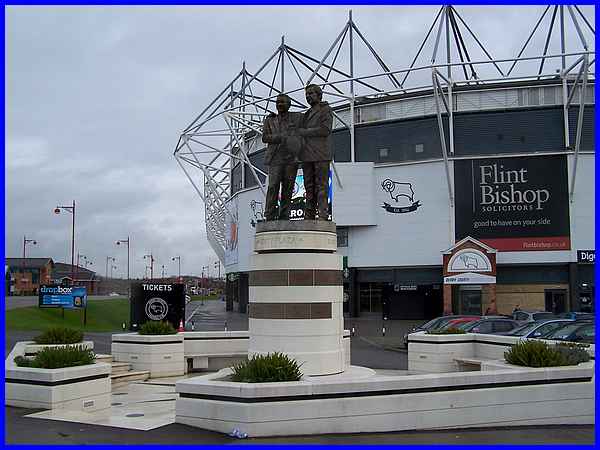
Leaving the river at this point brings us out close to Pride
Park Stadium the home ground of Derby County Football Club. Whilst
the 34,000 seater stadium is new being officially opened by Queen
Elizabeth II on 18 July 1997 the club has a long heritage of
its own. It was established in 1884 and was based elsewhere in
the city at the Baseball Ground from 1895 until its transfer
to Pride Park.
|
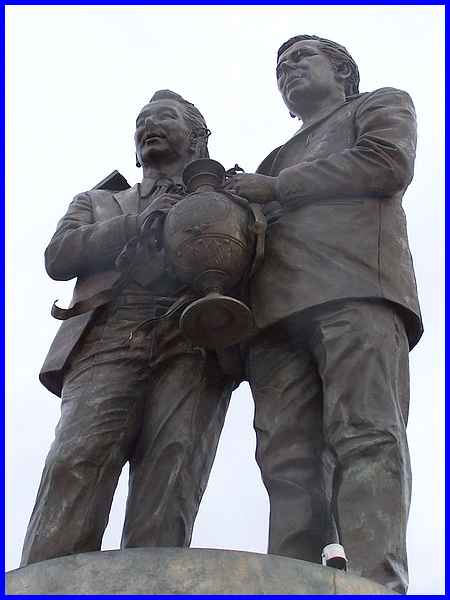
At one corner of the ground, pride of place is now occupied by
a 9'0" (2.7m) high bronze statue of legendary manager Brian
Clough and his assistant Peter Taylor. The monument was unveiled
to the public on August 28th 2010, a day after a private service
with the families of both men. Clough and Taylor managed the
club between 1967 and 1973 a significant period in the history
and heritage of Derby County when the club won the League Championship
in 1972. The monument designed by Andrew Edwards also includes
the League Championship trophy and joins two more statues of
Brian Clough, one in his home town of Middlesbrough (2007) and
another in Nottingham (2008) where he also took Nottingham Forest
to league and cup glory. Derby County are currently managed by
Brian's son Nigel who will be hoping to emulate his father and
add further to the history and heritage of the club and also
the city and it is here that it seems fitting to bring this series
to a close.
During the last three years I have explored parts of Derby I
had never been to before even though I have lived in the county
all my life. I have learned a lot about the city and I'm sure
there is much more that I missed but it has been an interesting
experience and one I hope you have enjoyed too. Now for pastures
new - but as to where .... that's yet to be decided.
|

